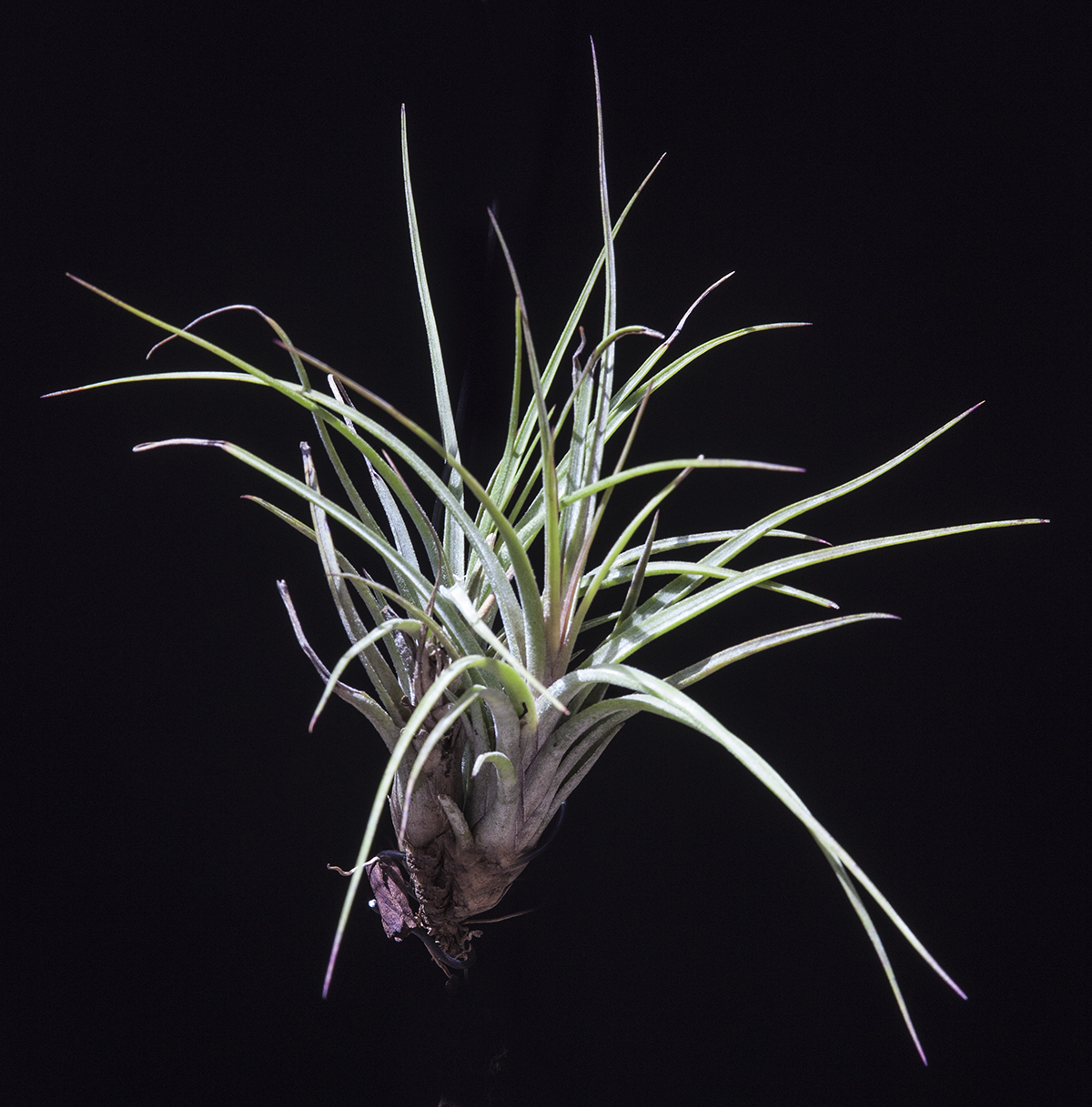A
catalogue of Bromeliads used for various projects by - Lloyd Godman
This
is a catalogue of bromeliads used by Lloyd godman for his various installations
and photosynthesis projects - the collection of pants he accessed in
New Zealand from 1996 - 2004 was collected from a wide range of sources,
while most were brought from Greens Bromeliads, some were also donated
by the Dunedin Botanical Gardens. Later in 2004 these plants were either
sold or given away with his move to Australia.
Lloyd is at present re-establishing his collection where he now lives
in Melbourne.
A
Lexicon of Bromeliads: A
resource by Lloyd Godman
Genus - Tillandsia: Sub-Family - Tillandsioideae: Family - Bromeliad
Tillandsias
are regarded as true air plants and as such are among the most unusual
of the Bromeliad family. They range from bulbous forms and grass like
structures to silver tufted masses. Typically they grow where there
is free air movement like high treetop environments or across open rock
faces, and often they are heavily covered in silver trichomes that help
reflect the high levels of sun light they receive in these locations.
While some tolerate temperatures as low as 5 degrees C (40 degrees F),
or even lower, most prefer temperatures of around 10-32 degrees C (50-32
degrees F). While they require high levels of humidity, they need to
dry out quickly and completely between misting or watering. As the trichome
scales open to absorb moisture and close to retain it, it is important
that the plants are given time to dry out and most plant deaths occur
because of over watering.
| Tillandsia meridionalis X hybrid |
|
|

.
|
Family: Bromeliad
Sub-Family: Tillandsioideae:
Genus: Tillandsia
Sub-Genus:
Native distribution: N/A hybrid
Seed parent: T. meridionalis
Pollen Parent:
Habit:
Foliage:
Flowers:
Seed:
Pups:
Cultivation:
Fertilization: A mist every week with Epiphyites Delight or Epsom salts during the growing season will help the plant.
( Epiphyte’s Delight fertilizer was developed for a special reason. Nitrogen promotes foliar growth. If you have Tillandsias, Orchids, or other epiphytes and you feed them, take a look at the nitrogen content. If it’s high in urea, the plants can’t use it because the urea needs a bacteria in soil to break it down into ammonia and nitrates. Since the epiphytes don’t have any soil they can’t break down the urea. It was for this reason that we had Epiphyte’s Delight formulated. It contains only ammoniacal and nitrate nitrogen which is immediately accessible and usable by the plants.)
Availability:
|
|